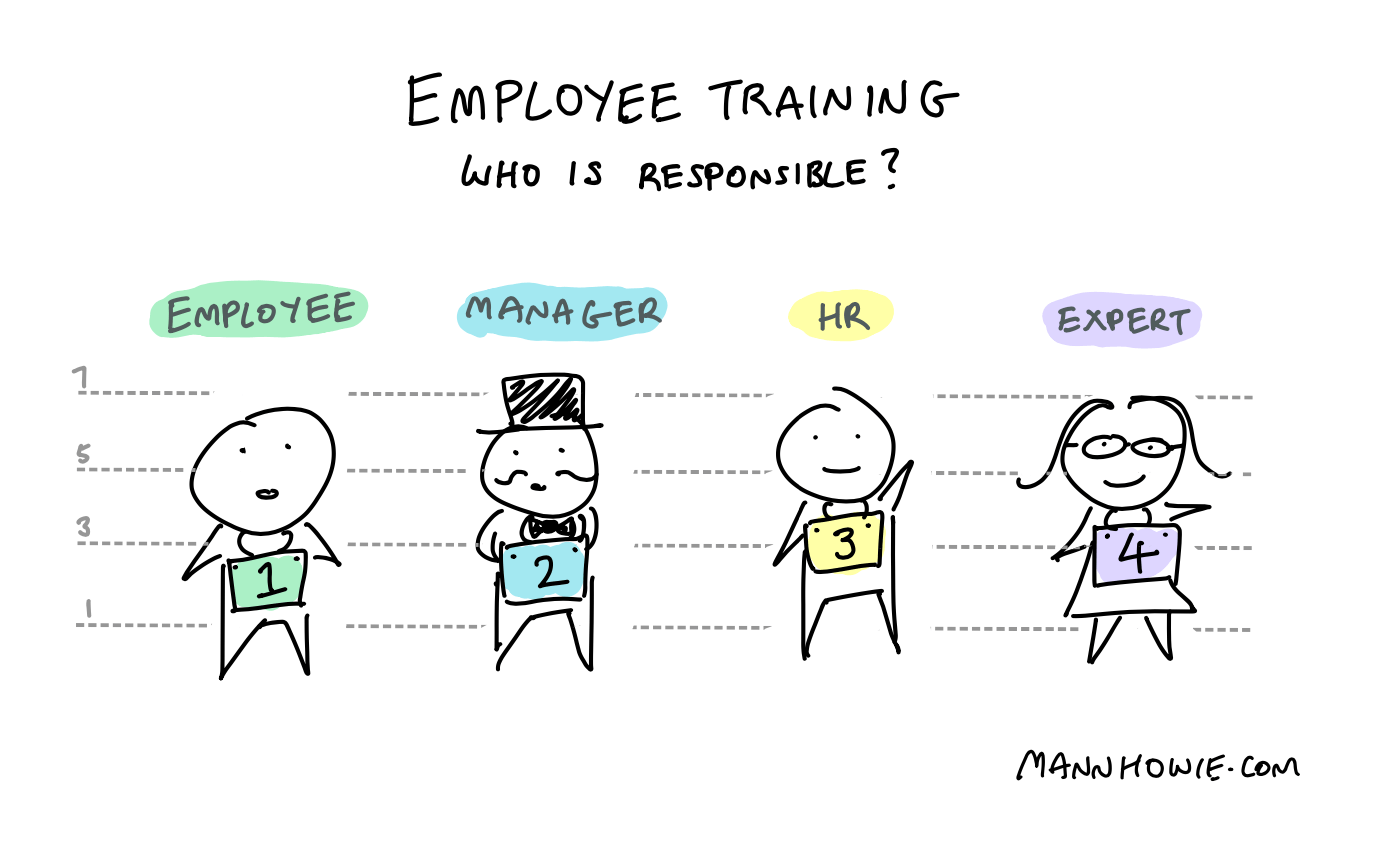Employee Training: Who is the Person Responsible?
4 minute read | Jan 4, 2023
management
The person responsible for employee training and development is their direct manager. It is not a shared responsibility of the organization and should not be outsourced.

This article argues why training is the manager’s job and how they can engage with others to take action to improve it:
- Why training is the manager’s job
- Benefits of manager training
- How managers can engage others to help train subordinates
1. Why training is the manager’s job
Formel Intel CEO Andy Grove argues that as the manager is responsible for the output of the team, then if an employee is not doing their job it is the manager’s job to find out why and take action to improve it.
In his book High Output Management, Andy makes the syllogism that if you accept that:
- Training, along with motivation, is the way to improve the performance of your subordinates; and
- What you teach must be closely tied to what you practise, and that training needs to be continuous rather than a one-time event
- Therefore it is clear that the who of training is you, the manager.
This means that the manager needs to be responsible and actively involved in the training of their subordinates rather than leaving it to HR or external trainers.
2. Benefits of manager training
The two main benefits of a manager who trains is they are able to 1) better identify skills gaps; and 2) send the strongest positive culture:
1. Better identify skills gap
Managers are responsible for setting the team’s output (the what) and are closer to the alignment with the company’s objectives (the why). This is needed to both identify and prioritise the relevant skills and knowledge gaps which may often change.
2. Send the strongest positive culture
People look to managers as the “big dog’s” in the company, and culture often emulates their behaviour for better or for worse. A manager who invests their own time in training sends the message that continuous improvement and taking ownership trumps talent and finger pointing.
3. How managers can engage others to help train subordinates
Here is a summary of how managers may approach employee training with their subordinates and how to engage people in other divisions to assist.
| Person | Manager Do’s ✅ | Manager Don'ts ❌ |
|---|---|---|
| Manager (you) |
|
|
| Employee (subordinate) |
|
|
| HR |
|
|
| Subject Matter Expert |
|
|
References
- Andy Grove (1995). ‘Why Training is the Boss’s Job (Chapter 16)’ In High Output Management
Want more tips?
Get future posts with actionable tips in under 5 minutes and a bonus cheat sheet on '10 Biases Everyone Should Know'.
Your email stays private. No ads ever. Unsubscribe anytime.